#Hellbrunn Palace
Explore tagged Tumblr posts
Photo
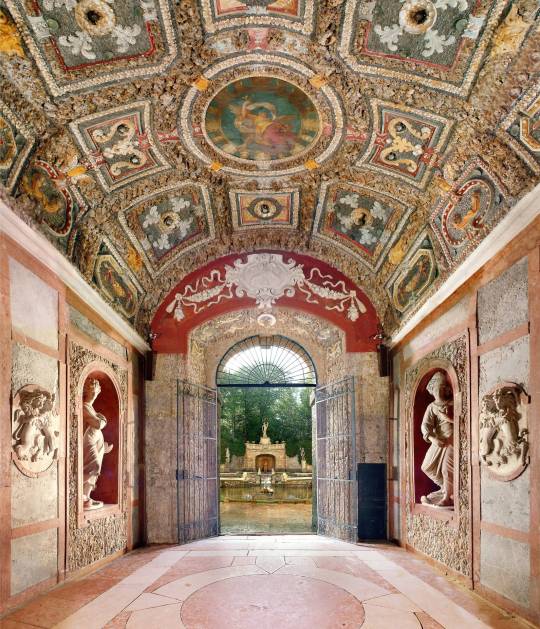
Neptungrotte, Hellbrunn Palace, Morzg, Salzburg, Austria
#art#design#grotto#neptune#hellbrunn Palace#palace#gardens#baroque#morzg#salzburg#austria#luxury house#luxury home#style#luxurylifestyle#history#grotte
612 notes
·
View notes
Text

Salzburg is a city that offers a perfect blend of history, culture, and natural beauty. Whether you're exploring the historic sites, enjoying the natural beauty, or immersing yourself in the local culture, Salzburg promises a memorable experience. If you're planning your trip from Dubai, consider booking Austria holiday packages from Dubai UAE, Austria holiday packages from Dubai, or even broader Europe holiday packages from Dubai to make your journey even more convenient and enjoyable. Start planning your trip today and discover the magic of this enchanting city!
Click here to refer or avail: --->> https://www.satgurutravel.ae/holiday-packages-from-dubai-uae/austria-holiday-packages-from-dubai-uae/
https://www.satgurutravel.ae/holiday-packages-from-dubai-uae/europe-holiday-packages/
#Salzburg Attractions#Austria Travel#European Getaways#Hohensalzburg Castle#Mirabell Palace#Salzburger Freilichtmuseum#Hellbrunn Palace#Austria Holiday Packages from Dubai UAE#Austria Holiday Packages from Dubai#Europe holiday packages from Dubai
0 notes
Video
The Ruin Grotto by Henrik Sundholm Via Flickr: Part of the Hellbrunn Palace in Salzburg, Austria.
#interior#architecture#building#palace#schloss#hellbrunn palace#hellbrunn#floor#stone#rock#cracks#crack#vault#brick#windows#light#shadows#decrepit#broken#hdr#room#salzburg#austria#Schloss Hellbrunn#Ruinengrotte#flickr
0 notes
Text

Statue of Mercury (Salzburg, Hellbrunn Palace)
#left a rock from my travels there#mercury#mercury god#mercurius#hermes#hermes god#gods#roman polytheism#hellenic polytheism#photography#my photos
100 notes
·
View notes
Text

Three-faced Trinity. Anonymous, 17th century. Folklore Museum at the Hellbrunn Palace (Salzburg)
In order to avoid Tritheism (the doctrine that makes three gods of the three persons of the Trinity), the three-faced Trinity was used, that is, three faces that shared the same body. At the beginning of the late Middle Ages the tricephalous Trinity was also used, but it was quickly marginalised, because the three-headed monster delighted on bestiaries. From the end of the 14th century onwards, the three-faced head was consolidated, a solution halfway between Greco-Roman polytheism and Jewish monotheism, founded on visual references of antiquity. For example, the goddess Hecate of Greek mythology, associated with the moon, used to be represented with three bodies or three heads corresponding to three phases of the moon (perhaps for this reason, her statues presided over the crossroads). Three-faced deities were often related to their triple time dimension (past, present, and future), in a way similar to the Roman god Janus, with his face facing back (the past) and the other facing forward (the future). A distant source in Asian art can also be traced, with the “Trimurti” or triple image of Brahma (the creator), Vishnu (the preserver) and Shiva (the destroyer or transformer). The origin is even sought in Welsh, Germanic or Celtic deities of the High Middle Ages, associated with sun worshipping, a star that observes everything; deities who received different names, depending on the region, and who were represented with multiple heads.
4 notes
·
View notes
Text
Older water games at Schloß Hellbrunn

The city of Salzburg was the epicentre of a rich ecclesiastical state in which the archbishop became an automatic prince and had secular authority over a territory extending more or less over the present-day Austrian federal state of Salzburg.
The princely archbishopric was instituted around the beginning of the 13th century, when Eberhard II created several bishoprics under his feudal authority (Chiemsee, Seckau and Lavant).
One of the most prominent Salzburg prince-archbishops was Markus Sittikus, who planned his summer residence at Hellbrunn with the cathedral architect, the master builder Santino Solari. Taking advantage of the fact that the Hellbrunner Berg provided a large flow of water, a palace was built in which the so-called "Water Games" took centre stage.
The hydraulic techniques applied to Hellbrunn's gardens include ingenious water games: from deer that spout water from their mouths, a crown that dances driven by water or, one of the best known, a stone table with water jets hidden in the seats to surprise the prince-archbishop's guests.
Within the palace walls, Hellbrunn Park is home to 60 hectares of green space, with meadows, ponds and playgrounds filled with flowers and a skyline framed by the Alpine mountains. It was originally a hunting ground of the prince-archbishop.
However, the episcopal wealth derived from the salt business (Salz in German) was not the reason for Hellbrunn's construction.
Sittikus' predecessor, Wolf Dietrich, who was also his cousin, was responsible for the construction of Schloß Altenau, another pleasure palace outside the city limits.
Wolf Dietrich built it for his mistress, Salome Alto, and her children. When Sittikus came to power, he renamed it Mirabell and decided to build another residence that would ensure the continuation of his name and power.
The dignity lasted until the beginning of the 19th century, when it was secularised and turned into a duchy under the authority of Ferdinand III of Tuscany, son of the Austrian Emperor Leopold II.
1 note
·
View note
Text
Day 12 - Halden
The Sound of Music tour was what many of us were most looking forward to, thus we entered the day with grand expectations. I was no exception; having watched the Sound of Music as my first live musical, and from my experience playing Rolf Gruber in a small production, I was overjoyed to be where the movie was filmed and where the real Von Trapp family lived. After breakfast in the hotel, we returned to the Mirabell Gardens. The gardens were another instance of history meeting fantasy. The gardens were of course a centerpiece of many of the scenes in the 1965 Sound of Music film, but they are also a very real piece of history dating back to the 17th century Mirabell Palace.

Mirabell Gardens [Canon AE-1, Kodak Gold 200]
This course has been a complicated blend of tourism, academics and immersion, but the moment we stepped on the tour bus, it was immediately clear that this experience would be that of the first. I quickly faced disappointment when the stops on the tour were listed out. We would be going to all the major filming locations, but the real Traunstraße 34, the house of the real Von Trapps was not to be visited. I felt that this exclusion was what made the difference between an experience meant to educate and one meant to entertain. That being said, the tour guide did share many anecdotes from the lives of the real Von Trapps, but the majority of the tour was spent watching movie scenes on the bus and photographing the film locations. The first stop was Leopoldskron Palace where the water scenes were filmed. It was a very scenic location with a lake clear as glass and a stunning rococo mansion, but we learned that the building never appears in the film; the shots towards the water were filmed there, but any shots facing the building were filmed at a different palace, our next “stop.”

Leopoldskron Palace [Canon AE-1, Kodak Gold 200]
While the actual Von Trapp mansion was not on the tour, we drove past Frohnburg Castle, the set for the mansion in the film. Today the property houses the Mozarteum Art University and thus is not open to the public. We had to be content with a slowed drive past to get photographs at a distance. It was a bit disappointing to be unable to see the house up close, it was reassuring to know that it was at least being put to educational use.

Frohnburg Castle [Canon AE-1, Kodak Gold 200]
We headed to a third palace, Hellbrunn, which does not itself appear in the film, but houses the iconic gazebo used in “Sixteen Going on Seventeen.” This was the location I was most looking forward to and I was very excited to relive my role of Rolf at the film location.

The Gazebo [Canon AE-1, Kodak Gold 200]
On the way to the town of Mondsee, we stopped by the scenic lakeside district and took in the breathtaking view. While it only appears in the film for a brief aerial shot, the lakeside villages are an iconic part of Vienna’s beauty and rich with history dating back to prehistoric settlements.

Paraglider on the Lake [Canon AE-1, Kodak Gold 200]
The town of Mondsee was the last and largest stop on the tour. The primary attraction of the town is the Basilica St. Michael. With both Gothic and baroque elements, it was perfect for the set of the wedding of Maria and the Captain. Besides being a stunning architectural sight and a major filming location in the Sound of Music, it continues to be used to this day for weddings. . . and funerals. As we approached the Basilica, I made note of a hearse draped in flowers parked outside. I realized what was taking place as I watched a stream of tourists rushing to see the altar that Maria was married at–in a functional film–only to find a very real funeral taking place. I was appalled. Here was another example of the past, the present, and a fictional narrative of the city finding themselves in conflict. A historic abbey dating back to the medieval period being used for a very real funeral in the present has become a tourist attraction because of the fictional reality presented by a film. It was an experience that put much of the nature of this course into perspective. While we were there primarily to experience the history of the city, we were also absorbing the culture of Vienna in the present and learning how it is shaped by the past. At the same time, we are also reconciling ourselves with these fictional depictions of Austria ranging from films to musicians in anachronistic outfits and wigs. Despite this initial setback, the town was lovely. We explored the streets for a while, stopping into souvenir shops or grabbing a quick bite to eat. Shortly before our departure, we were startled by the ringing of the church bells followed by the sounding of the town’s air raid siren which led to a great deal of confusion until we remembered the funeral that was still ongoing; perhaps a fitting retribution for the earlier disruption.

The Basilica St. Michael [Canon AE-1, Kodak Gold 200]
On the bus ride back, we were entertained by a plethora of movie clips, sing-alongs and behind the scenes interviews from the Sound of Music. Upon our arrival in Salzburg, I was eager to visit the actual Von Trapp mansion. While the others found lunch, I walked out to the far southeast side of the city and began to search for the address I knew so well. After just under an hour of walking, I finally found the Traunstraße and followed it to house 34. The building was gated in and only a small portion of the upper story was visible through the foliage, but I was overjoyed. I felt that I had found more meaning in this real piece of the Von Trapp story.

Traunstraße 34 [Canon AE-1, Kodak Gold 200]
I did not linger long as the house is within a residential neibourhood, but I felt that it was worth the long walk. When we reconviened in the city center, we did not linger long in the city as we had to make the train back to Vienna. Salzburg was such a lovley city with incredible scenery, but we were all very happy to be returning to the city we knew so well. We arrived shortly before 21:00 and were just in time to catch the Eurovision final at the hotel!! The final went very late and the results were rather dissapointing (Sweden? Really?!?), but it was a simple and enjoyable way to conclude our adventures in Salzburg.
1 note
·
View note
Photo

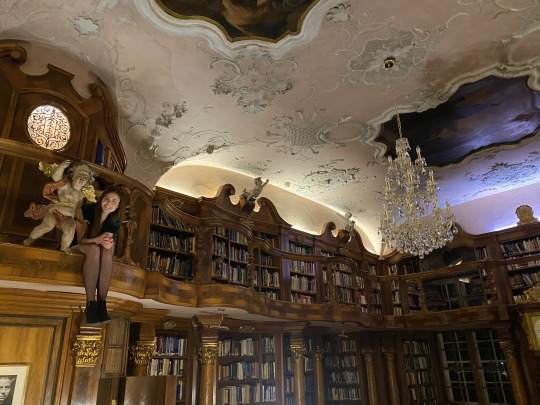
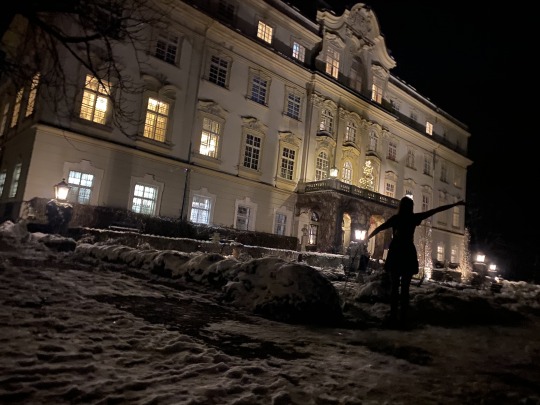

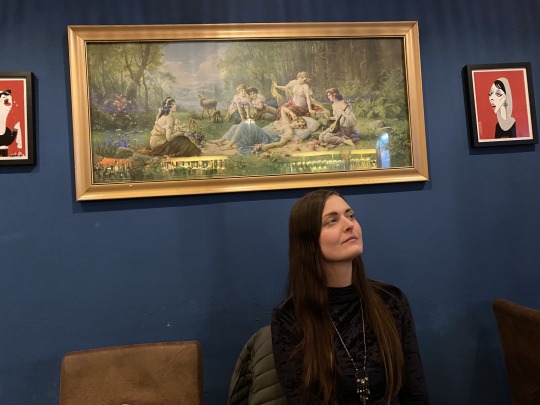
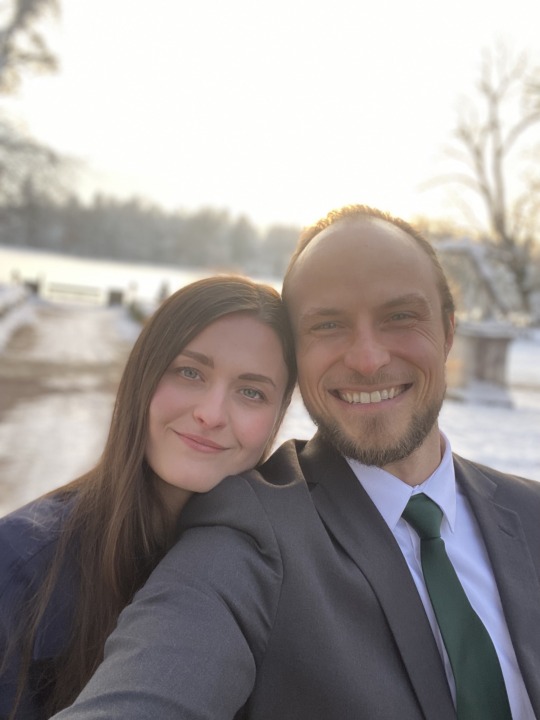



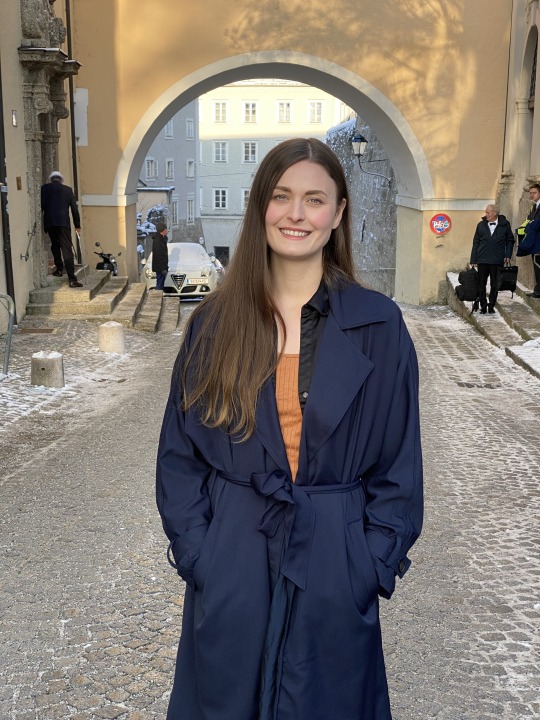
Chris and I spent a magical holiday in Austria for a family friends destination wedding. From airbnb to the Schloss Leopoldskron and all the beautiful walkable places in between the quaint beautiful city of Salzburg. The Christmas markets were incredible, they also featured the Krampus tradition, a folkloric beast-like creature. We laughed and explored, we visited the Mirabell Palace and Gardens, and a group of us booked a private 4 hour Sound of Music tour. We explored the Nonnberg Abbey, went to Scholosspark Hellbrunn, saw the famous gazebo where the “I am 16 going on 17″ song was performed, we visited the church where Maria and Captain von Trapp married, this was located in Mondsee. The view was unreal as we drove through the mountains. We also hiked up the steepest of hills to tour through the Fortress Hohensalzburg. A group of us saw an outstanding lifelike marionette performance of The Nutcracker at the world’s oldest marionette theatre. A visit to Salzburg wouldn’t be complete without visiting Mozart’s Birthplace, where I learned all about his life, his relationship with his family, walked around the very room he was born in, and read the letters he wrote to his sister, one of which included his daily routine. Among all the delicious traditional Austrian foods we enjoyed we also went out for a date-night at a delicious Syrian restaurant called 11:11 Make a Wish. The hospitality there was fantastic, and the art was very cool, we later found out that the artist was a friend of the owners. Our friends were married at a Catholic church at Pfarre Mulln with Father Franz, who was the sweetest and funniest Father & Monk! He greeted folks from all over the world in various languages (English, Spanish, German, Romanian). The reception took place in the Great Hall at Schloss Leopoldskron where a beautiful string quartet played, and where the most gorgeous library was located. I never would have imagined visiting Austria in the dead of winter. As I reflect I am beyond grateful to have had the opportunity to visit such a magical place. Here’s to the year ahead. May the whole year provide an abundance of love, respect, liberation, and joy. Happy New Year.
0 notes
Photo

hellbrunn palace - castles in and around salzburg (visit european castles)
86 notes
·
View notes
Text
Austria – Salzburg – UNESCO World Heritage Site – P9
Austria – Salzburg – UNESCO World Heritage Site – P9
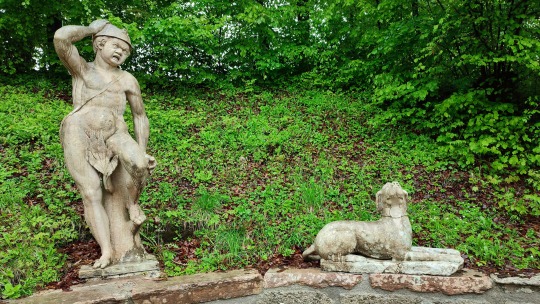
View On WordPress
#Austria#Hellbrunn Palace#Photography#Salzburg#Travel#Travel experience#Travel Photography#Trick Fountains
0 notes
Text
Top 5 Must-Visit Attractions in Salzburg, Austria: A Traveler’s Guide
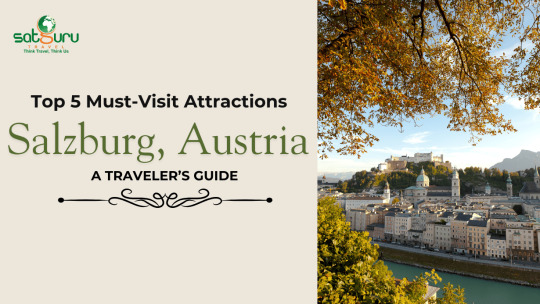
Salzburg, the birthplace of Mozart and a city steeped in history and culture, offers a blend of natural beauty and urban charm. Whether you're a history buff, a music lover, or simply someone seeking a picturesque European getaway, Salzburg has something to offer. If you're planning your trip from Dubai, consider exploring Austria holiday packages from Dubai UAE, Austria holiday packages from Dubai, or even broader Europe holiday packages from Dubai to make your journey even more convenient and enjoyable.
1. Hohensalzburg Castle
Perched atop Festungsberg hill, Hohensalzburg Castle is one of the largest preserved medieval fortresses in Europe. Built in 1077, this fortress offers stunning views of the city and hosts various cultural events, including concerts and an international summer academy. The castle is not only a historical marvel but also a place where you can experience the rich cultural heritage of Salzburg.
2. Mirabell Palace and Gardens
This Baroque palace, built in 1606, is famous for its stunning gardens and mythological statues. Mirabell Palace is not only a place of historical significance but also a popular venue for weddings and photo shoots. The palace and its gardens are a perfect spot to soak in the beauty and tranquility of Salzburg.
3. Mozart Birthplace
Salzburg is synonymous with Mozart, and his birthplace is a must-visit for any music lover. This museum showcases artifacts, paintings, and exhibits that provide insight into the life of the famous composer. The building has been preserved and restored to its 18th-century appearance, allowing visitors to step back in time and imagine life in the Mozart family home.
4. Salzburger Freilichtmuseum
Located near Untersberg, this open-air museum is a unique experience. It features over 100 farmhouses, a butterfly garden, and an adventure playground, offering a glimpse into traditional Austrian rural life. The museum is a perfect place to explore the cultural heritage of the region.
5. Hellbrunn Palace
This 17th-century palace offers a glimpse into the opulent lifestyle of the archbishops. It features beautiful gardens, fountains, and the famous Trick Fountains. The palace is a perfect place to explore the rich history and cultural heritage of Salzburg.
Conclusion
Salzburg is a city that offers a perfect blend of history, culture, and natural beauty. Whether you're exploring the historic sites, enjoying the natural beauty, or immersing yourself in the local culture, Salzburg promises a memorable experience. If you're planning your trip from Dubai, consider booking Austria holiday packages from Dubai UAE, Austria holiday packages from Dubai, or even broader Europe holiday packages from Dubai to make your journey even more convenient and enjoyable. Start planning your trip today and discover the magic of this enchanting city!
#Salzburg Attractions#Austria Travel#European Getaways#Hohensalzburg Castle#Mirabell Palace#Salzburger Freilichtmuseum#Hellbrunn Palace#Austria Holiday Packages from Dubai UAE#Austria Holiday Packages from Dubai#Europe holiday packages from Dubai
0 notes
Video
The Hellbrunn Man by Henrik Sundholm Via Flickr: One of the numerous sculptures at Hellbrunn Palace in Salzburg, Austria.
#hellbrunn#hellbrunn palace#palace#museum#schloss#statue#sculpture#art#artwork#gravel#stone#rock#walls#hdr#salzburg#austria#flickr
0 notes
Text
Salzburg Trip Journey Information | Expedia
Salzburg Trip Journey Information | Expedia
Salzburg – a fairy story setting, surrounded by lakes and mountains, and straddling the banks of the Salzach River. Discover the highest sights of town right here.

View On WordPress
#Augustiner Brewery#Austria#Cafe Tomaselli#cvg#Europe#Hellbrunn Palace (Schloss Hellbrunn)#Hohensalzburg Castle#Kapuzinerberg#Mirabell Palace (Schloss Mirabell)#Mozart&039;s Birthplace (Mozarts Geburtshaus)#Museum der Moderne Moenchsberg#Residenz#Residenzplatz#Salzburg#Salzburg Cathedral#Salzburg Marionette Theater#Salzburg Museum#Salzwelten Hallein
1 note
·
View note
Text
Salzburg Vacation Travel Guide | Expedia
Salzburg Vacation Travel Guide | Expedia
Salzburg – a fairy tale setting, surrounded by lakes and mountains, and straddling the banks of the Salzach River. Explore the top sights of the city here.

View On WordPress
#Augustiner Brewery#Austria#Cafe Tomaselli#cvg#europe#Hellbrunn Palace (Schloss Hellbrunn)#Hohensalzburg Castle#Kapuzinerberg#Mirabell Palace (Schloss Mirabell)#Mozart&039;s Birthplace (Mozarts Geburtshaus)#Museum der Moderne Moenchsberg#Residenz#Residenzplatz#Salzburg#Salzburg Cathedral#Salzburg Marionette Theater#Salzburg Museum#Salzwelten Hallein
0 notes
Photo

Hellbrunn Palace, Morzg, Salzburg, Austria
#art#design#architecture#garden#landscape#fountain#hellbrunn#palace#austria#salzburg#morzg#baroque#luxury#luxury estate
118 notes
·
View notes
Text
Le caviar blanc, trésor inattendu au cœur des Alpes
Une entreprise autrichienne élève plusieurs centaines d'esturgeons blancs dont les œufs s'arrachent à prix d'or, surtout en ces périodes de fêtes. Stefan Astner inspecte en cuissardes au pied d'un magnifique décor alpin des esturgeons albinos rarissimes, dont le caviar au coût astronomique est expédié dans le monde entier pour le réveillon de la Saint-Sylvestre. «Les poissons sont déjà passés à l'échographie pour qu'on voit s'ils sont pleins et ils entreront en phase de production bientôt», explique bonnet vissé sur la tête cet employé. Il travaille à Grödig, un village situé près de Salzbourg, en Autriche, où grandissent en pisciculture des femelles aux œufs qui valent de l'or. À l'atelier, le patron Walter Grüll incise délicatement la chair de l'une d'entre elles, âgée de 16 ans, pour en extraire un caviar à la couleur crème surprenante. «Il est encore plus doux, encore plus fondant que celui qui est traditionnellement noir», explique-t-il en lavant sa récolte.

Ces oeufs sont parmi les aliments les plus onéreux au monde ~1300€ les 100g. Cette dernière ne pèse que 600 grammes et vaut... 8 000 euros. C'est trois fois plus que le caviar noir, déjà considéré comme un produit de luxe. «Ces œufs sont parmi les aliments les plus onéreux au monde. Ils représentent seulement 1% de notre production totale de caviar», énonce Walter Grüll.

Dans une pièce à côté, sa fille Alexandra prépare une quarantaine de colis réfrigérés. «Ça part pour l'Allemagne, l'Italie, l'Espagne», détaille-t-elle, le nez sur les bons de commande. La crise du coronavirus a certes eu un effet sur la demande: les tables étoilées attendent des jours meilleurs, les palaces sont fermés. Mais la vente au détail explose. Quitte à rester chez soi, autant ressortir l'argenterie et les mets qui vont avec... «Les gens veulent savourer l'instant présent», lance l'éleveur en répondant aux incessants coups de fil qui ponctuent ses journées. Les fêtes de fin d'année représentent près de 40% de son chiffre d'affaires annuel.
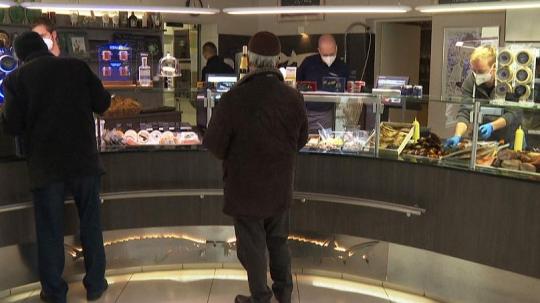
Les noms des clients ne seront pas révélés, la discrétion est gage de succès dans ce secteur. Beaucoup d'entre eux se situent en Asie, en Russie et au Moyen-Orient. Une célèbre marque de voitures haut de gamme vient d'appeler et récemment, la maison a reçu la proposition d'une compagnie aérienne désirant offrir à ses clients premium du caviar «Made in Austria».

Walter Grüll, qui a humblement démarré en 1981 avec l'omble et la truite, a voulu se démarquer de l'offre mondiale en faisant se reproduire en captivité ces esturgeons immaculés, caractérisés par une absence totale de pigmentation. Il dispose désormais de plusieurs centaines de poissons protégés par des caméras et des grilles cadenassées dans un parc arboré proche du château de Hellbrunn, un joyau Renaissance. Car cette précieuse denrée attire les convoitises: plusieurs vols ont eu lieu ces dernières années dans d'autres exploitations. La qualité de leurs œufs, eux aussi sans mélanine, doit beaucoup aux bassins cristallins dans lesquels ils évoluent. La pureté de l'eau venue des cimes convient par exemple à merveille à l'esturgeon du Danube, l'un des plus petits de l'espèce. Cette démarche «d'exotisme du terroir» s'inscrit dans l'air du temps, les changements climatiques incitant des consommateurs plus regardants à rapprocher les produits de leur assiette. Plus largement, l'élevage d'esturgeon noir ou blanc, qui s'est développé depuis un quart de siècle principalement en Chine, en Italie et en France à la suite de l'interdiction de la pêche, s'inscrit également dans une volonté de conservation. Cette espèce pouvant vivre jusqu'à 120 ans, présente sur terre au temps des dinosaures, est au bord de l'extinction dans son milieu naturel en Russie ou en Iran. La production mondiale issue de l'esturgeon sauvage s'est effondrée dans les années 1980, en raison de la surpêche et de la pollution.

Selon les dernières statistiques disponibles de la World Sturgeon Conservation Society en date de 2018, 2 480 fermes dans 55 pays produisent 415 tonnes de caviar par an. Seuls 30 à 40 d'entre elles, dont deux ou trois en Autriche, en proposent du blanc, estime l'universitaire Thomas Friedrich, qui coordonne à Vienne un programme de renforcement des populations d'esturgeon du Danube. Quand par miracle un albinos arrivait à l'âge adulte à l'état sauvage et finissait pêché en mer Caspienne, raconte-t-il, ses œufs blancs étaient réservés exclusivement au Shah d'Iran.
6 notes
·
View notes
